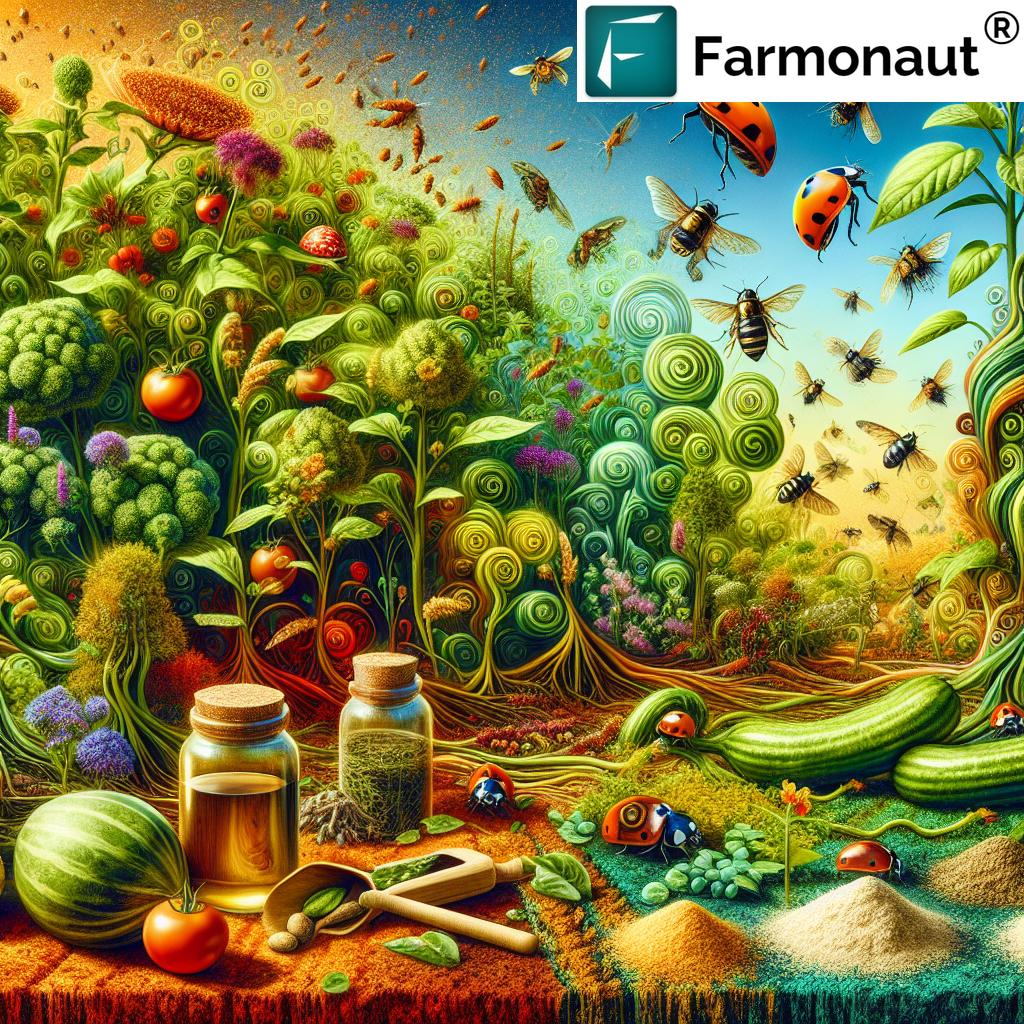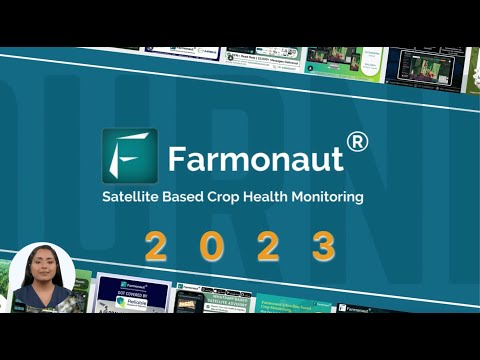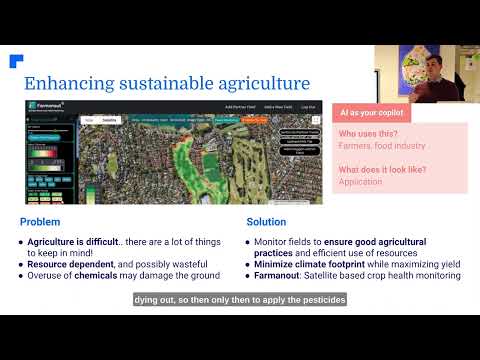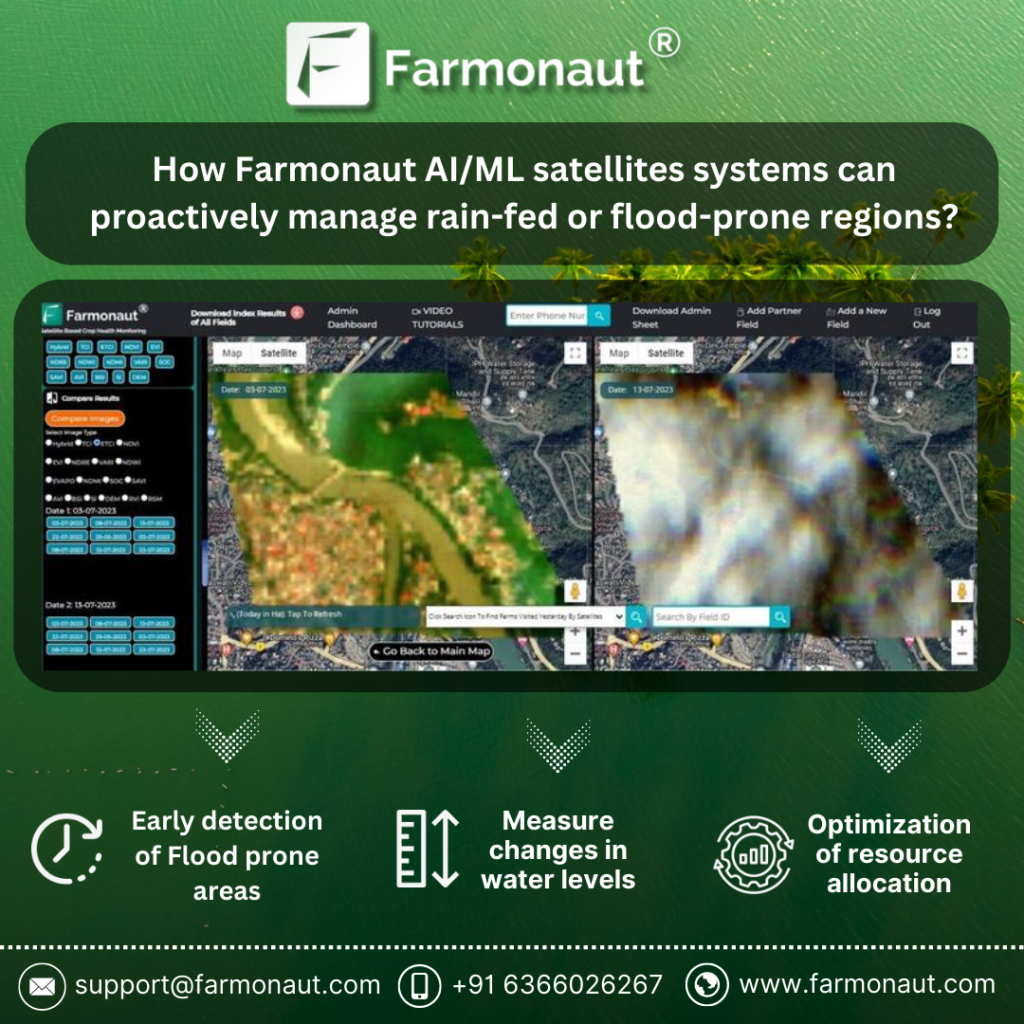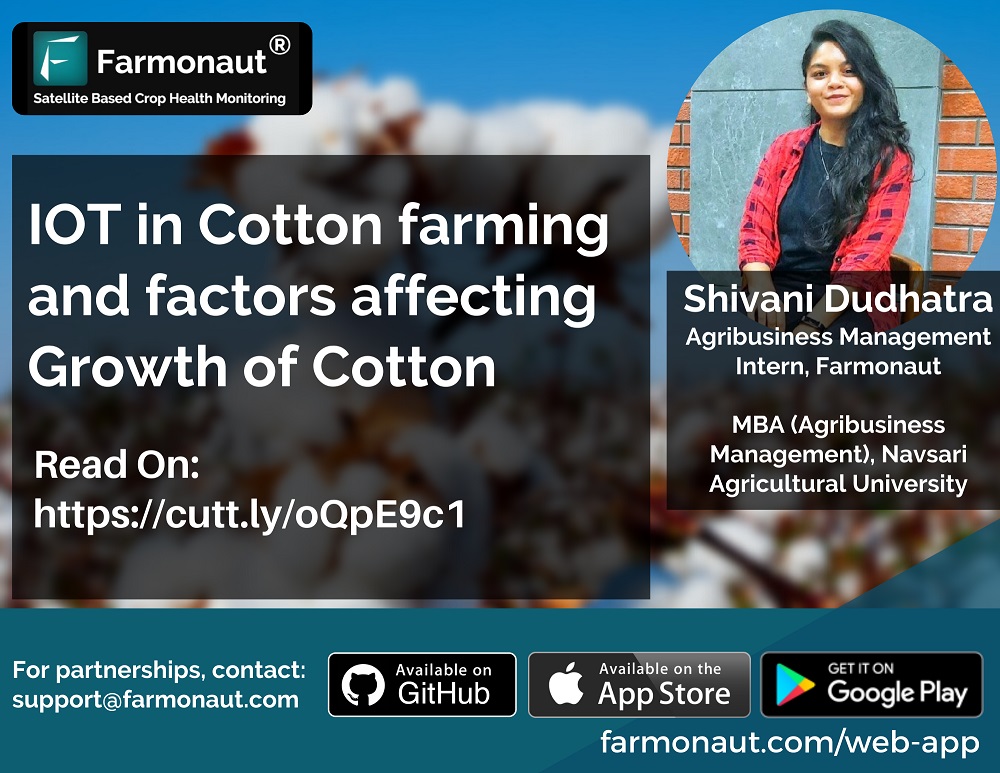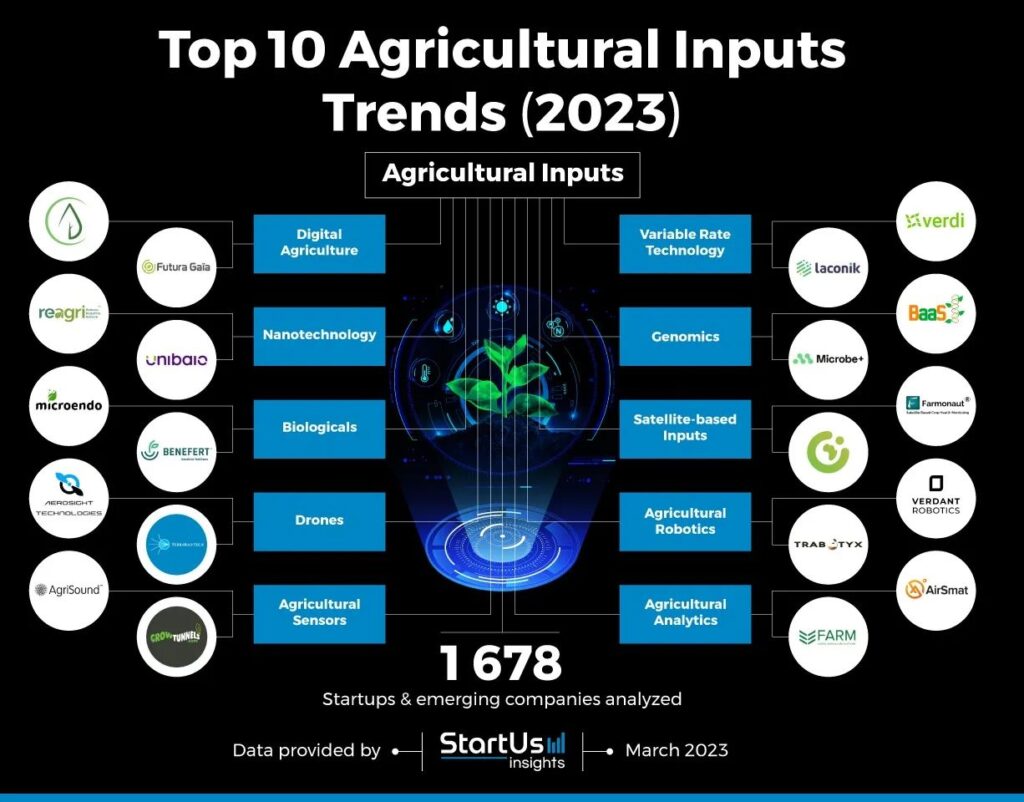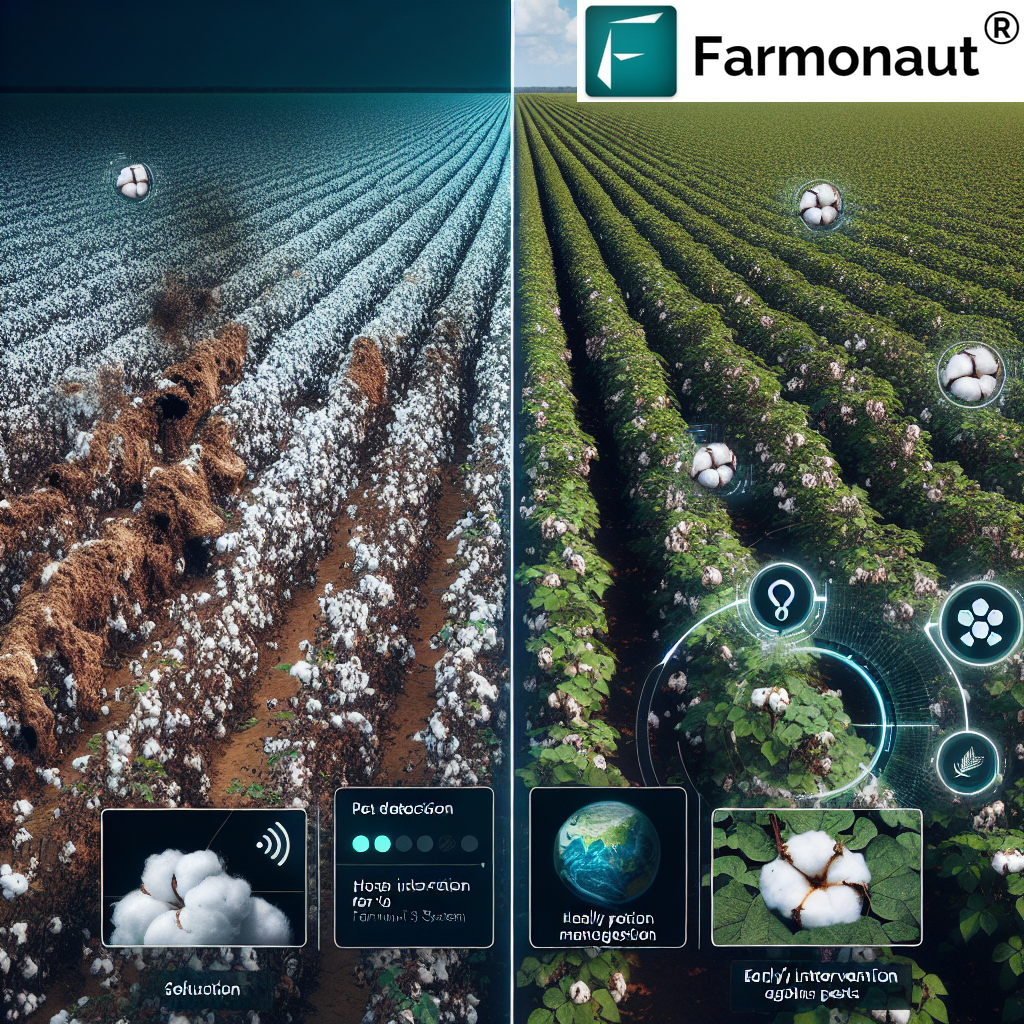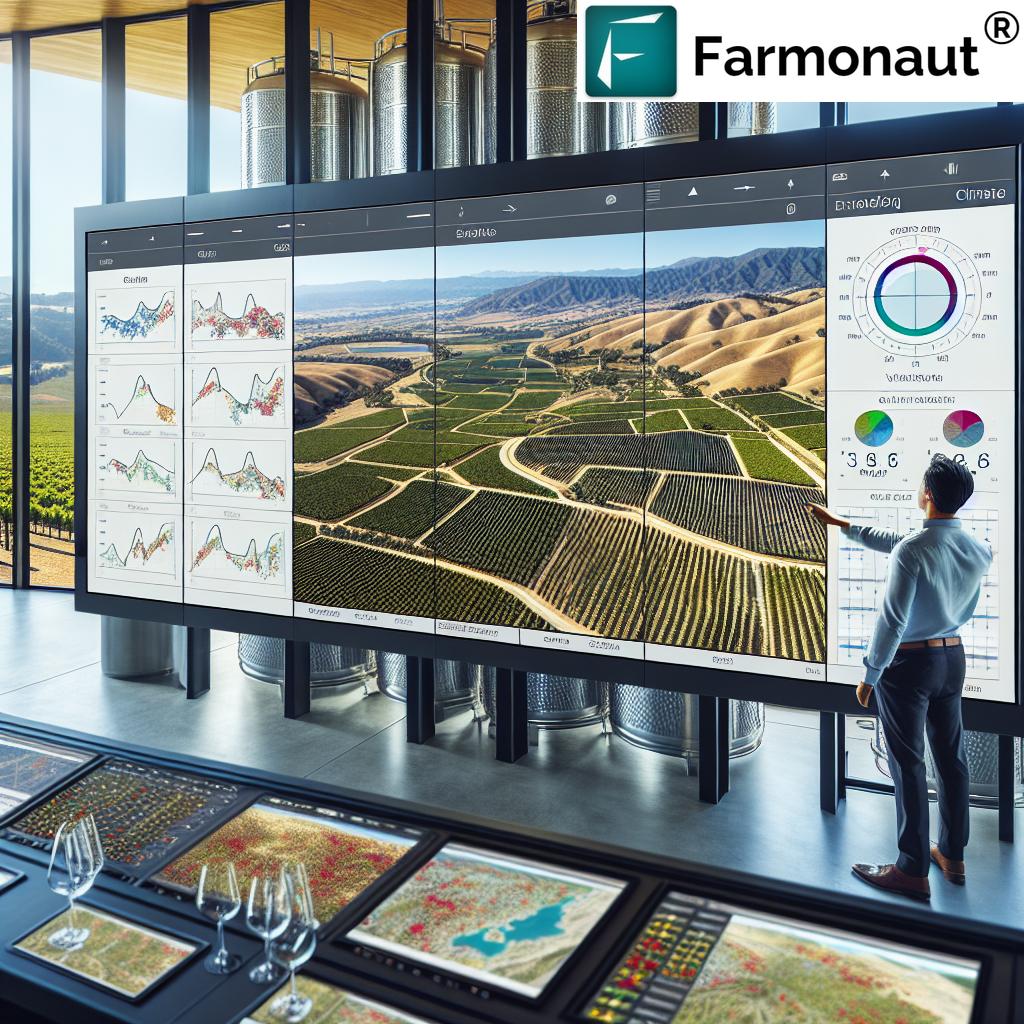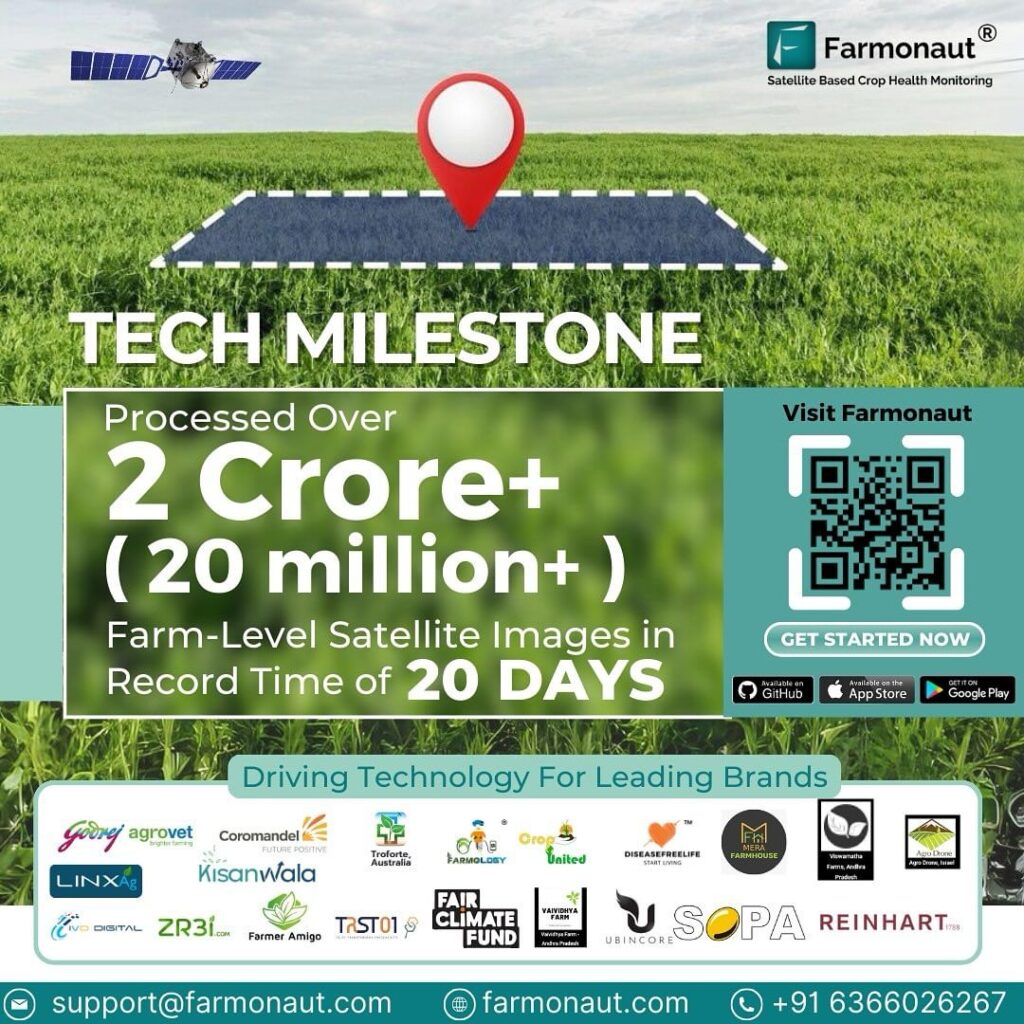Table of Contents
- Introduction: Eco-Friendly Pest Management
- What is Eco Friendly Pest Management?
- 7 Shocking Plant Hacks for Sustainable Pest Management
- 1. Integrated Pest Management (IPM): The Ultimate Framework
- 2. Biological Pest Control: Harnessing Nature’s Predators
- 3. Cultural Practices: Preventing Pest Problems Naturally
- 4. Mechanical and Physical Controls: Direct Pest Interventions
- 5. Botanical and Natural Pesticides: Minimizing Chemical Impact
- 6. Companion Planting: The Secret Plant Hack for Pest Deterrence
- 7. Soil Health: Composting & Mulching for Plant Resilience
- Water Management: Preventing Pest Attraction
- Farmonaut: Digital Solutions Empowering Sustainable Pest Management
- Comparison Table: Eco-Friendly Pest Management Methods
- FAQ – Eco Friendly Pest Management
- Conclusion
Eco Friendly Pest Management: 7 Shocking Plant Hacks for a Sustainable Future
In today’s world, where environmental sustainability is at the forefront of modern agriculture, eco-friendly pest management is more than just a buzzword—it’s an essential strategy for the long-term health of our soil, crops, and food systems. Managing pests in a way that minimizes harm to the environment and human health, while also preserving biodiversity, is now a priority for farmers and gardeners worldwide.
We can no longer rely heavily on synthetic chemicals for pest control. Instead, we need smart, comprehensive, and green solutions that leverage nature’s own design. Using integrated pest management (IPM), biological pest control, natural pest control methods like composting, mulching, and companion planting for pest control, we create a balanced ecosystem where pest populations are managed effectively and our food systems stay healthy and productive.
Let’s embark on this journey to explore the 7 most shocking plant hacks for sustainable pest management. Along the way, we’ll show how advanced, technology-driven platforms like Farmonaut empower us to make smarter, more sustainable decisions across all scales of farming.
What is Eco Friendly Pest Management?
Eco-friendly pest management refers to a suite of techniques and strategies designed to control and reduce unwanted insects and organisms in plants by minimizing environmental impact. Unlike traditional chemical-heavy methods, this approach prioritizes sustainable practices that protect our health and the wider ecosystem, such as:
- Integrated Pest Management (IPM): Combining multiple control strategies for a holistic, long-term solution
- Biological Pest Control: Harnessing predators, parasitoids, and pathogens to suppress pests naturally
- Cultural Practices: Modifying crop rotation, intercropping, and maintaining healthy soil conditions
- Mechanical & Physical Techniques: Using tools, barriers, and direct removal of pests
- Natural Substances: Applying botanical and mineral solutions like neem oil and diatomaceous earth
- Companion Planting: Using plant partnerships to deter pests and attract beneficial species
- Soil Health Enhancements: Focusing on composting, mulching, and responsible irrigation to strengthen plant resilience
By integrating these eco-friendly pest management practices, we create healthier, more robust, and sustainable farm and garden ecosystems—ready to meet the challenges of tomorrow.
7 Shocking Plant Hacks for Sustainable Pest Management
Each of the following plant hacks draws from proven, eco-friendly principles to keep our plants and soil healthy—while also supporting our commitment to environmental stewardship.
1. Integrated Pest Management (IPM): The Ultimate Framework
When it comes to eco-friendly pest management, nothing beats the comprehensive power of Integrated Pest Management (IPM). As defined by the United Nations Food and Agriculture Organization, IPM is about “the careful consideration of all available pest control techniques and subsequent integration of appropriate measures that discourage the development of pest populations”. This strategy is all about reducing dependency on chemicals, integrating biological, cultural, mechanical, and physical methods to keep pests in check—without harming the environment or non-target organisms.
- Monitoring and Identification: We start with frequent and detailed pest monitoring (using tools like satellite imagery or manual inspection), ensuring we only intervene when absolutely necessary.
- Thresholds: We determine pest population levels at which action must be taken, preventing unnecessary interventions.
- Prevention: Through healthy soil, proper watering, and crop management, we make our fields less hospitable to harmful insects.
- Control: When threshold levels are met, we select the least risky control methods first—like introducing natural predators or applying organic substances.
The adaptability and holistic nature of IPM makes it a gold standard for sustainable pest management—in home gardens and commercial farms alike.
Farmonaut owners can further optimize IPM with real-time satellite-based crop health monitoring, AI-advisories, and integrated resource planning, leading to economically viable, balanced ecosystem solutions. See their carbon footprinting product for sustainable farm audits.
2. Biological Pest Control: Harnessing Nature’s Predators
Biological pest control is a core principle in eco-friendly pest management. This method involves introducing or encouraging natural enemies—like predators, parasitoids, and pathogens—to keep pest populations below damaging levels. Some real-world examples:
- Ladybugs and Lacewings: These voracious predators devour aphids and other soft-bodied pests on vegetables, ornamentals, and field crops. Release or attract them to boost your plant’s natural defenses.
- Beneficial Nematodes: Certain nematode species, such as Steinernema and Heterorhabditis, hunt down soil-dwelling grubs and insect larvae, offering targeted, soil-based pest control.
- Bacillus thuringiensis (Bt): This naturally occurring bacterium produces toxins lethal to specific insect larvae—especially caterpillars—without impacting non-target species or human health.
Biological controls are highly effective when properly matched to the targeted pest and used as part of an integrated framework. Since they focus on specific organisms, collateral environmental damage is minimal—making them a win-win for our ecosystem!
For tracking pest cycles and optimizing timing, Farmonaut’s AI-advisory system can suggest the best moments to introduce beneficial predators, reducing trial-and-error and enhancing management success.
3. Cultural Practices: Preventing Pest Problems Naturally
Many of the most powerful pest management strategies begin with cultural techniques—gentle adjustments to how we grow and care for our crops to prevent pest problems from ever taking root.
- Crop Rotation: Rotating crops seasonally disrupts pest and disease cycles by removing their food source and habitat. This is especially effective against soil-borne organisms and insects with narrow host ranges.
- Intercropping: Planting a diversity of crops together (intercropping) confuses pests and promotes beneficial species, enhancing biodiversity and resilience.
- Maintaining Healthy Soil: Robust, nutrient-rich soil grows more resilient, pest-resistant plants. Composting and mulching are methods we’ll cover in detail below.
- Removing Debris: Clearing plant debris and old crop residues helps reduce buildup of overwintering pests and pathogens.
These practices are preventative at heart—reducing the environments in which pests thrive, improving plant health, and minimizing the need for intervention.
Using advanced monitoring tools, such as Farmonaut’s satellite imagery and real-time soil health indicators, we can fine-tune these cultural practices, catching emerging threats before they become problems. For large operations, the Large Scale Farm Management platform offers comprehensive, data-driven insights on crop cycles and amendment schedules.
4. Mechanical and Physical Controls: Direct Pest Interventions
Sometimes the best solution is the simplest! Mechanical pest control techniques involve physically removing or excluding pests from our plants. This eco-friendly approach is especially useful for small areas, home gardens, or high-value crops:
- Hand-Picking: Direct removal of visible pests (like beetles, caterpillars, and slugs) is one of the oldest, most immediate methods—especially effective during early infestations.
- Traps: Sticky traps and pheromone traps help monitor and reduce flying insects by luring them into a contained area.
- Row Covers & Barriers: Lightweight fabrics or plastic sheets physically block flying insects from accessing plants while letting light and water through.
- Diatomaceous Earth: This naturally occurring, fossilized remains of diatoms forms a powder that is deadly to crawling insects. Apply around the base of plants—the microscopic sharp edges abrade exoskeletons, causing dehydration and death. For best results, keep it dry (moisture reduces its effectiveness).
These measures reduce pest populations without chemicals, supporting a balanced ecosystem and protecting beneficial organisms. They are indispensable for organic or sustainable pest management operations.
Need accurate pest mapping? Combine your on-the-ground scouting with Farmonaut’s satellite-based crop health monitoring to focus physical interventions exactly where they’re needed. Their Farm Management solution supports geographic pest tracking and optimal input deployment.
5. Botanical and Natural Pesticides: Minimizing Chemical Impact
When pest pressures rise beyond what can be handled through prevention or physical removal, it’s time for targeted use of natural pest control methods. Some of the most widely used botanical pesticides include:
- Neem Oil: Extracted from neem seeds, this oil acts as a growth regulator and repellent against a wide range of insects, larvae, and eggs. Using neem oil for pests disrupts their hormonal balance, preventing them from developing and reproducing. Apply as a foliar spray or soil drench, but repeat regularly—its effect washes away quickly and poses minimal environmental risk.
- Diatomaceous Earth: As described earlier, this powder made from fossilized diatoms is an excellent organic option for slugs, beetles, and crawling pests. Sprinkle where pest traffic is heavy. Remember, moisture reduces its efficacy.
- Iron Phosphate: This mineral-based bait is a safer alternative to synthetic molluscicides when controlling slugs and snails. It causes them to stop feeding, yet is safe for wildlife and edible plants.
Using these natural substances helps us avoid overreliance on harsh chemicals while providing practical, effective interventions within the sustainable pest management toolbox.
Before opting for any spray, regular pest monitoring through Farmonaut’s AI-based advisory system can alert us to precise intervention windows, further minimizing impact.
6. Companion Planting: The Secret Plant Hack for Pest Deterrence
Companion planting for pest control is one of the most powerful, yet often overlooked, agricultural hacks. By combining certain plants within our fields and gardens, we naturally deter pests, promote biodiversity, and enhance crop vigor.
- Marigolds: When planted around vegetables (like tomatoes or peppers), they release compounds that repel nematodes and certain beetles.
- Basil: Basil’s strong aroma discourages flies and mosquitoes, making it an ideal border plant for many crops.
- Garlic and Chives: Naturally discourage aphids and beetles. Interplant with roses for stunning flowers and lower pest loads!
- Nasturtiums: Attract aphids, “sacrificing” themselves to protect other crops. Aphid predators also flock to them.
- Legumes: Fix nitrogen in the soil and attract predator insects, supporting neighboring plants’ health and resilience.
This botanical hack is foundational to sustainable pest management—all while creating a vibrant, healthy ecosystem.
Not sure where to start? Farmonaut’s crop plantation, forest, and advisory tools (see their advisory app) can recommend customized companion patterns and alert you to pest-prone zones.
7. Soil Health & Pest Control: Composting & Mulching for Plant Resilience
Soil health and pest control are deeply linked. Healthy, living soil supports vigorous plants that are better able to resist insect and disease attacks. Two critical practices are:
- Composting: Returns organic material and beneficial microbes to the soil. This improves plant immunity and interrupts harmful pest cycles naturally.
- Mulching: Applying organic or inorganic mulch retains moisture, suppresses weeds, and moderates soil temperature. Mulch creates a habitat for beneficial predators and provides a physical barrier to crawling pests.
These practices promote a living, dynamic ecosystem beneath our crops—one where pests are effectively managed by predatory organisms and strong plant roots.
With Farmonaut’s satellite soil moisture and health insights and AI advisories, we can measure real-time improvements from compost and mulch, optimizing our pest and resource management every season.
Water Management: Preventing Pest Attraction
Proper irrigation isn’t just about preventing drought—it’s also central to eco-friendly pest management. Overwatered soil breeds root rot and attracts pests like fungus gnats, while drought-stressed plants are more vulnerable to attack.
- Drip Irrigation: Delivers water right to the root zones, avoiding foliar dampness that attracts fungus and mold-loving insects.
- Smart Scheduling: Using weather data and soil moisture sensors prevents waterlogging and ensures plants receive only the water they truly need.
Optimize water management with Farmonaut’s real-time moisture monitoring—delivering actionable insights for efficient resource management, pest prevention, and increased productivity.
For scaled farm fleet logistics, their Fleet Management tools ensure timely delivery of water and farm inputs across large or distributed fields.
Comparison Table: Eco-Friendly Pest Management Methods
| Pest Management Method | How It Works | Estimated Effectiveness (% Pests Reduced) | Environmental Impact | Cost Estimate | Best For (Crop/Plant Type) |
|---|---|---|---|---|---|
| Integrated Pest Management (IPM) | Combines cultural, biological, mechanical, and chemical techniques based on real-time monitoring and thresholds. | 50-90% | Low | Medium | All field & horticultural crops |
| Biological Controls | Introducing/encouraging predators, pathogens, or parasitoids to reduce target pest populations naturally. | 40-80% | Low | Medium | Vegetables, fruits, field crops |
| Composting & Mulching | Enriches soil with nutrients and beneficial organisms, increases plant resistance. | 20-50% | Low | Low | All garden/row crops |
| Companion Planting | Grows mutually beneficial plants together to repel pests and attract beneficial insects. | 25-60% | Low | Low | Vegetables, fruits, ornamentals |
| Neem Oil Application | Disrupts insect hormone development and feeding; acts as broad-spectrum repellent. | 40-70% | Low-Medium | Low-Medium | Vegetables, fruit trees, herbs |
| Natural Predators | Use of ladybugs, lacewings, nematodes, etc. to hunt down pest eggs, larvae, and adults. | 30-70% | Low | Medium | Open fields, greenhouses |
| Physical Barriers | Row covers, diatomaceous earth, sticky traps—physically exclude or kill pests. | 30-60% | Low | Low | Small gardens, nurseries |
Farmonaut: Digital Solutions Empowering Sustainable Pest Management
Embracing eco-friendly pest management is even more accessible and effective with innovative platforms like Farmonaut. By leveraging satellite imagery, AI-driven insights, and cloud-based tools, Farmonaut provides us with real-time, actionable data for smarter pest management, irrigation, and optimal resource allocation.
- Satellite-Based Crop Health Monitoring: Detect pest or disease hotspots, NDVI variability, and stressed zones for precision interventions.
- AI-Based Advisory System: Get custom alerts and recommendations for pest threat levels, control timings, and preventive actions—including regional weather intelligence.
- Blockchain Traceability: For food brands and large agribusinesses—the Product Traceability solution ensures every product’s journey, from field to consumer, is tracked for transparency and trust.
- Fleet and Resource Management: Optimize logistics, ensure timely input delivery, and reduce costs using satellite location mapping with Fleet Management tools.
- Carbon Footprinting: Comply with environmental standards and reduce emissions with the Carbon Footprinting feature—real-time emissions tracking for your operations.
- Crop Loan & Insurance Support: Provide credible proof for loans or insurance claims with Farmonaut’s crop loan and insurance module, reducing risks for growers and financial institutions.
- API & Developer Access: Access satellite and farm data APIs for integration into custom solutions.
Click here for API Developer Docs.
This digital-first approach amplifies the power of natural pest control methods, creates more economically sustainable practices, and fosters environmental conservation from farm to table.
FAQ – Eco Friendly Pest Management
What is eco-friendly pest management, and how is it different from traditional pest control?
Eco-friendly pest management employs biological, cultural, mechanical, and natural substances to control pests, minimizing dependence on synthetic chemicals. It focuses on creating a balanced ecosystem and sustaining soil and plant health, unlike traditional approaches that primarily use broad-spectrum pesticides.
How effective are biological pest control methods?
Biological pest control methods, when matched appropriately to the target pest, can reduce populations by 40-80%. They are safe for the environment, have minimal impact on non-target organisms, and can be integrated with other sustainable approaches.
How does neem oil work against pests?
Neem oil acts as a pest repellent, disrupts insect hormone systems, and impedes development, feeding, and reproduction. Its active compounds break down quickly in the environment, so repeated application is necessary. It is extremely low risk to beneficial insects.
Why is companion planting for pest control so powerful?
Companion planting leverages natural interactions—aromas, root exudates, and habitat creation—to repel unwanted pests and attract beneficial organisms. It improves crop yields, reduces pesticide dependence, and enhances biodiversity in any agri-system.
How can digital tools like Farmonaut help improve pest management?
Farmonaut provides satellite-based crop health and soil moisture monitoring, AI-driven pest advisories, and actionable data to optimize interventions. Accurate, real-time insights increase the effectiveness of organic and natural pest management methods, while also supporting reporting and compliance.
What is the best eco-friendly pest management method for home gardens?
Companion planting, biological pest controls (like ladybugs and nematodes), composting, regular monitoring, and use of neem oil are all highly recommended for home gardens. Combining methods will offer best results with minimal environmental impact.
How does soil health relate to pest pressure?
Healthy soils (rich in organic matter, microbes, and nutrients) promote stronger plants, increasing resistance to pests and diseases. Practices like composting, mulching, and diversified planting support both soil and plant health, creating unfavorable conditions for most pests.
Conclusion: Shaping a Healthier, Greener Future with Eco Friendly Pest Management
Moving towards eco-friendly pest management is more than just a trend—it’s our responsibility. By applying integrated pest management, biological methods, preventive cultural practices, mechanical and physical controls, and natural substances like neem oil and diatomaceous earth, we can protect our crops, safeguard human health, and nurture a balanced ecosystem.
As we make these methods a core part of our management strategy, leveraging tools like Farmonaut’s digital platform ensures our efforts are data-driven, scalable, and sustainable—whether we’re backyard gardeners or managing thousands of hectares. Real-time crop health monitoring, AI-driven advisories, and blockchain-enabled transparency empower us to make better decisions from soil to harvest to market.
Let’s lead the way in reducing chemicals, preserving biodiversity, and growing healthy food—starting with these 7 shocking, sustainable plant hacks.
Empower your journey to greener, safer, and more resilient agriculture—
experience Farmonaut today!


